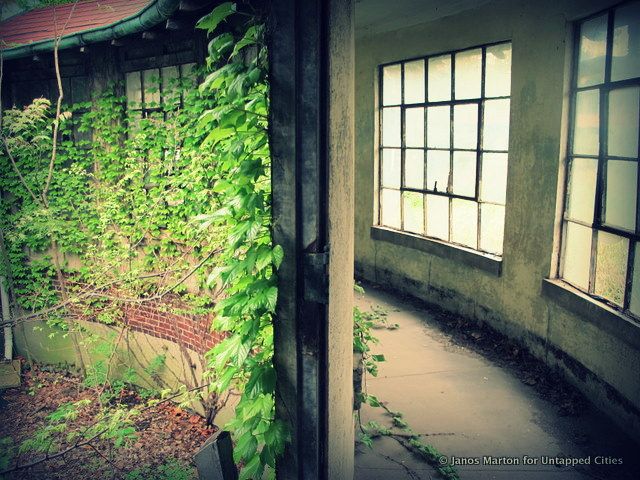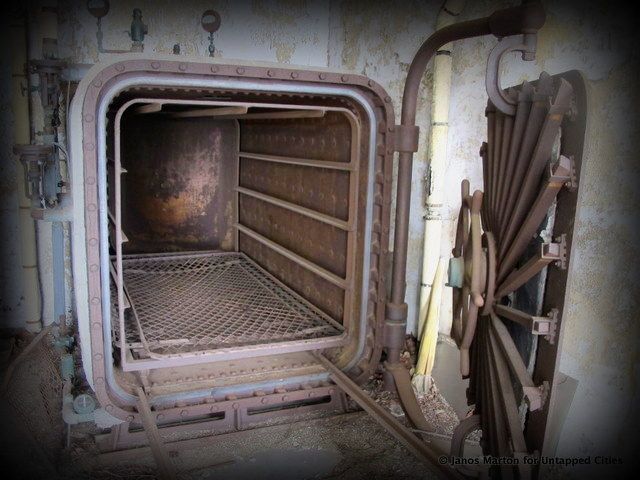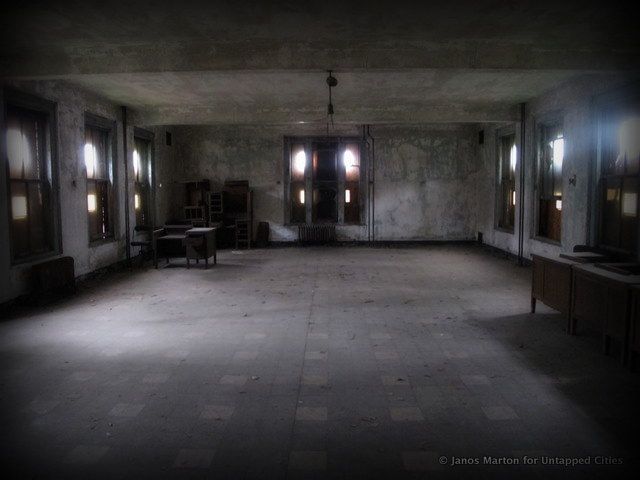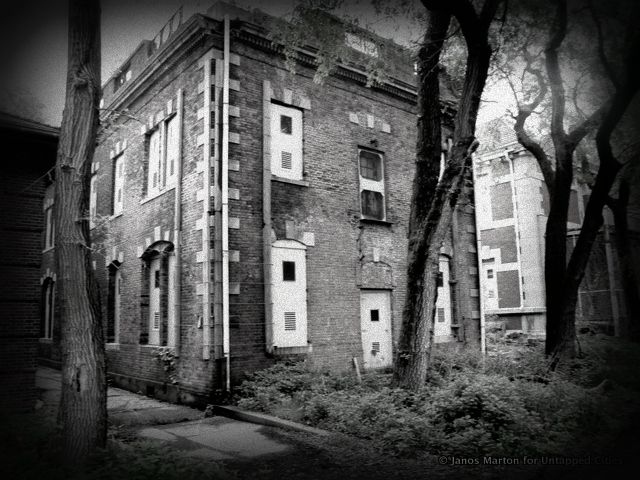A Salvaged Banksy Mural is Now on View in NYC
This unique Banksy mural goes up for auction on May 21st in NYC!


Untapped Cities is an official blog ambassador for Partners in Preservation , a community-based initiative by American Express and the National Trust for Historic Preservation to raise awareness of the importance of historic places. For complete coverage, follow our Partners in Preservation category.
Ellis Island, the gateway to the United States for millions of immigrants from 1892 to 1954, has become one of New York City’s top tourist attractions, drawing over two million visitors per year. Hiding in plain sight, just to the left of disembarking passengers headed towards the Great Hall, is the 22-building South Side hospital complex, once the standard for United States medical care, and one of the largest public health undertakings in American history. Today a volunteer group, Save Ellis Island, is raising public awareness about the remarkable operation that took place in its walls, which have been left to decay since the hospital complex nearly 60 years ago.
The Ellis Island South Side Hospital complex is one of the 40 locations in this year’s Partners for Preservation, a community-based initiative by American Express and the National Trust for Historic Preservation. As New York City’s first-ever citywide grassroots preservation effort, the call-to-action program will enlist the aid of all New Yorkers, and anyone who loves New York, to vote online to allocate $3 million dollars to the preservation projects most important to them.
Central as Ellis Island is to American lore and New York history (even though it is technically in New Jersey), its history is accompanied by certain myths. For example, no family names were changed on Ellis Island; in fact, names were recorded on ship manifests in Europe, and Ellis Island officials merely confirmed them during the screening process.
Similarly, most immigrants were not at risk of being sent home for poor health. While 10-20% of the 12 million immigrants to pass through Ellis Island were temporarily detained for health-related reasons, only the 1% with incurable contagious diseases was sent home. During the hospital’s years of operation, 3,500 immigrants passed away on Ellis Island, a remarkably low number given the prevalence of contagious diseases at the facility and the subpar health of third-class travelers enduring trips across that Atlantic Ocean that could last up to seven weeks. The rest received medical care and continued on their way, to a nation that was in desperate need of labor in the midst of the industrial revolution.
The success of the Ellis Island South Side hospitals can be attributed to its cutting edge building design, top-level medical staff, and significant government support. Doctors and nurses’ biggest threat was the spread of dangerous, contagious diseases, and every South Side hospital, from the construction of walls and passageways to its industrial laundry system, was done with recent germ theory developments in mind.

For example, touring the interconnected South Side passageways, which contain no electric light, is possible thanks to the omnipresence of windows, designed to maximize the circulation of fresh air- a century old “Open Windows” theory. When studies showed that germs tended to accumulate on corner intersections of walls and ceilings, new buildings were designed to have rounded edges that were subject to regular scrubbing.
 This machine sterilized hundreds of mattresses per hour
This machine sterilized hundreds of mattresses per hour
Attention to hygiene was meticulous. Sheets and mattresses were cleaned daily by industrial washing equipment. Medical staff took decontamination showers, and the facility was among the first in the nation to formally require the use of rubber gloves and face masks. Interestingly, the original hairnets consisted of cap-like fabric, and were designed to protect doctors’ heads from the scalding electric overhead lights. The hospital’s autopsy amphitheater served as a medical classroom, and there are hopes to eventually restore the room for educational purposes.

But the South Side hospitals were more than just a highly efficient medical assembly line. The complex included an indoor and outdoor entertainment center, a breakfast hall, and a home for the chief medical officer, whose family was reputed to waive on its porch to approaching ships, welcoming them to the United States. Save Ellis Island hopes to one day refurbish the outdoor entertainment area for concerts and movie screenings.

In walking the grounds, one is struck by the sophistication and care with which the buildings were designed, the architecture more befitting of a New England college campus than today’s drab hospitals. Additionally, the scale of the hospital complex suggests an enormously expensive operation, surprising given both the general hostility to immigration at the time, and the absence of a federal income tax during the early decades of the hospital.
In 1998, with the South Side hospitals many decades removed from such grandeur, New York Times columnist Clyde Haberman was to write,
Rain cascades from broken skylights. Weeds thick as tree branches poke through floors and walls. Veils of ivy shroud entire sections of the hospital in permanent darkness. Four decades of bird droppings and fallen plaster carpet stairways. Chunks of masonry have fallen off exterior walls, and steel beams are so rusted that the buildings they support may soon collapse.
Unfortunately, much of the South Side hospital complex remains in a state of decay, rather than the preferred “arrested decay.” Though funding allowed some restoration to take place in the past few years, including the new Ferry Building, much work remains stalls in the aftermath of budget cuts. Should restoration funding come through, advocates hope that the hospital complex will not only be open to the public, but also available as an educational space for discussions on immigration and health policy. At publication, the Ellis Island South Side hospital’s proposal to repair its windows had slipped to a disappointing 27
thplace among voters at the Partners in Preservation online vote. Surely a landmark of such historical importance deserves better.
Click here to vote for Ellis Island, and to find out more check out their Facebook.
Follow Untapped Cities on Twitter and Facebook! Get in touch with the author @janosmarton.
Subscribe to our newsletter